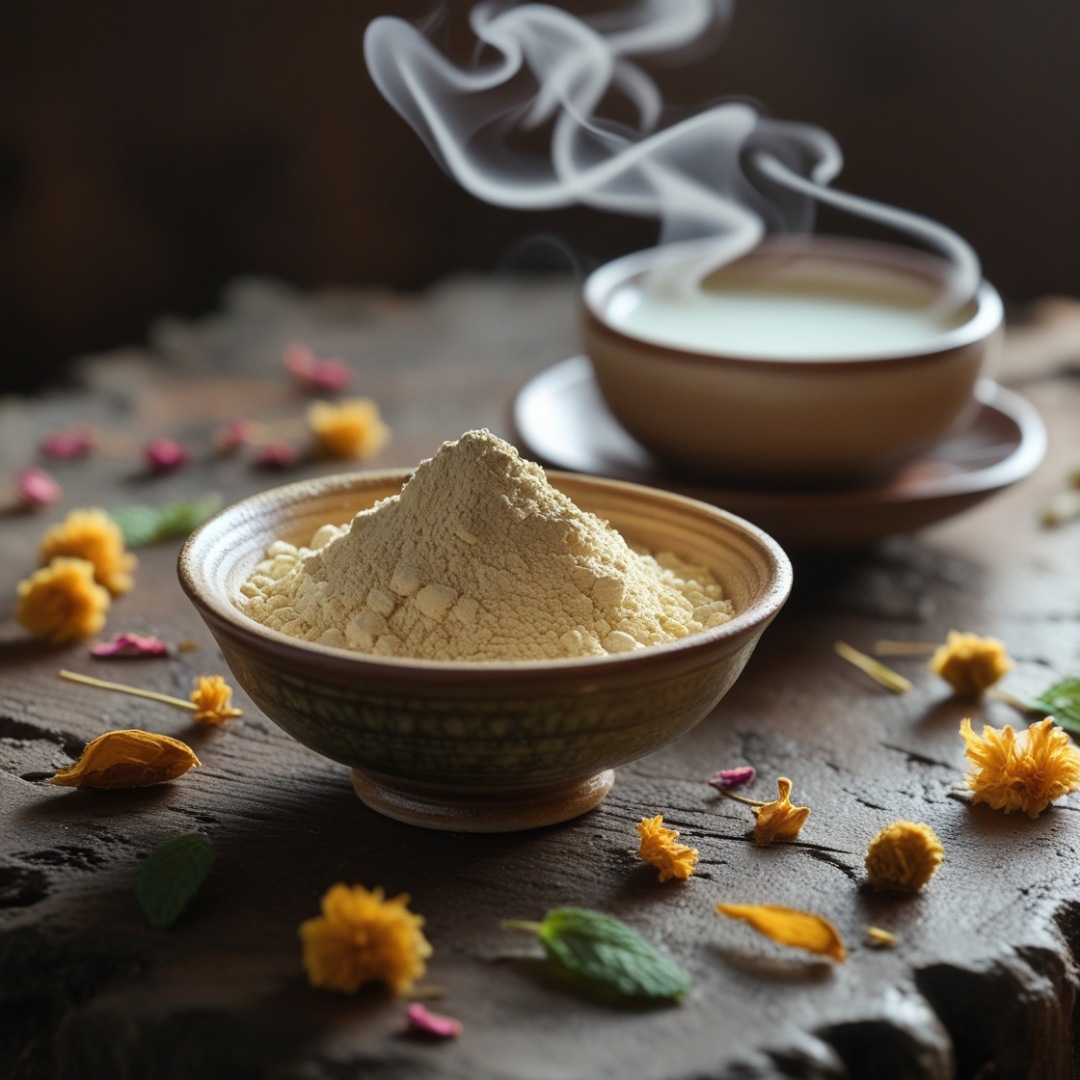Disclosure:
Thank you for reading this post, don't forget to subscribe!
Some of the links on this website are affiliate links. This means that if you click on the link and make a purchase, we may receive a small commission at no extra cost to you. Your support helps us keep the site running.Learn more on my Privacy Policy and Affiliate Disclosure page. Thank you for your support!
Caring for your brain is essential for overall well-being, and both Ayurveda and Yoga offer time-tested techniques to optimize brain health and cognitive function. This comprehensive guide explores six powerful practices rooted in ancient traditions, designed to improve memory, reduce stress, and promote mental clarity. Whether you’re seeking natural remedies or holistic strategies, these methods will help you achieve a healthier mind.
READ NEXT:
1. Ashwagandha for Brain Health
Ashwagandha is a powerful Ayurvedic herb known for its cognitive-enhancing properties. Derived from the Sanskrit words Ashwa (horse) and Gandha (scent), this herb is available in powdered and tablet forms.
Benefits of Ashwagandha:
- Promotes healthy brain function.
- Protects the brain from damage caused by toxins, injuries, and strokes.
- Reduces stress and enhances memory.
How to Use Ashwagandha:
- Mix Ashwagandha powder with warm milk and consume it before bed.
- Alternatively, blend it with water, adding a little ghee and honey for better taste and absorption.
For more tips on incorporating natural remedies into your daily routine, check out our article on Finding Joy in the Little Things: Practicing Mindfulness.
2. Mantra Chanting for Mental Clarity
Mantra chanting is an ancient practice that calms the mind and nurtures the soul. Scientific studies show that chanting mantras like Om can significantly reduce anxiety and depression.
Key Benefits of Mantra Chanting:
- Removes negative energy and restores a positive mental state.
- Improves focus and reduces stress.
- Helps balance emotional health.
How to Practice:
- Sit comfortably in a quiet space.
- Chant Om or other mantras 10 times daily to experience calming effects.
Learn more about the science of mantra chanting in this Harvard Health article.
3. Halasana (Plow Pose)

Halasana, or the Plow Pose, is a yogic posture that requires focus, flexibility, and control. This asana enhances spine health and increases alertness.
Steps to Perform Halasana:
- Lie on your back with your legs together and palms facing downward.
- Inhale and lift your legs to a 90-degree angle.
- Use your abdominal muscles to lift your hips and legs further, bringing your toes over your head to touch the floor.
- Keep your back perpendicular to the ground and hold the pose for 30 seconds to 1 minute.
- Exhale and gently lower your legs back to the starting position.
Benefits of Halasana:
- Reduces stress and improves brain health.
- Enhances memory and concentration.
- Promotes better blood circulation.
Explore more stress-relieving exercises in our post on Building a Morning Routine for a Productive Day.
4. Kapalbhati Pranayama

Kapalbhati, derived from the Sanskrit words Kapala (skull) and Bhati (shining), is a cleansing yogic technique. This breathing practice rejuvenates the mind and body by enhancing oxygen flow.
Steps to Practice Kapalbhati:
- Sit comfortably with your spine straight.
- Inhale deeply and exhale sharply through your nose while contracting your abdominal muscles.
- Repeat this cycle for 30 breaths to complete one round.
- Perform 3-5 rounds daily for optimal results.
Benefits of Kapalbhati:
- Detoxifies the respiratory system and sinuses.
- Increases brain oxygen levels, improving concentration.
- Reduces the frequency of sinusitis and migraines.
Dive deeper into the benefits of pranayama with this Yoga Journal guide.
5. Yoni Mudra for Mental Clarity

Yoni Mudra is a psychophysical technique that strengthens the nervous system and provides mental clarity. By calming the senses, it helps a distracted mind regain focus.
Steps to Practice Yoni Mudra:
- Sit in a meditative posture and close your eyes.
- Place your thumbs on your ears, index fingers on your eyelids, middle fingers on your nostrils, ring fingers above your lips, and little fingers below your lips.
- Keep your elbows parallel to the ground.
- Focus on your breath and practice for 5-10 minutes daily.
Benefits of Yoni Mudra:
- Enhances attentiveness and thought clarity.
- Reduces sensory overload.
- Strengthens the nervous system.
6. Adopting a Healthy Lifestyle
Beyond these specific practices, adopting a balanced lifestyle is crucial for brain health. Here are some tips:
- Improve Blood Circulation: Incorporate regular asanas and physical exercises.
- Stay Hydrated: Drink plenty of water to maintain cognitive function.
- Prioritize Sleep: Ensure 7-8 hours of quality sleep each night.
- Practice Meditation: Surrender your worries and cultivate mindfulness.
- Limit Overthinking: Focus on taking action rather than overanalyzing.
RECENT POST:
Conclusion
Ayurvedic and yogic practices provide holistic ways to improve brain health, memory, and focus. From Ashwagandha and mantra chanting to powerful yoga poses like Halasana and Kapalbhati, these techniques have stood the test of time. By integrating these methods into your daily routine, along with healthy lifestyle choices, you can cultivate a sharper, more resilient mind.
Take charge of your mental well-being today by embracing these ancient practices. Your brain will thank you! Explore more motivational content on Morningscape Mindset Media and take the first step toward your best life.
MORE ABOUT:
HEALTH / WELLNESS / FITNESS / NUTRITION
SHARE THIS ARTICLE

















